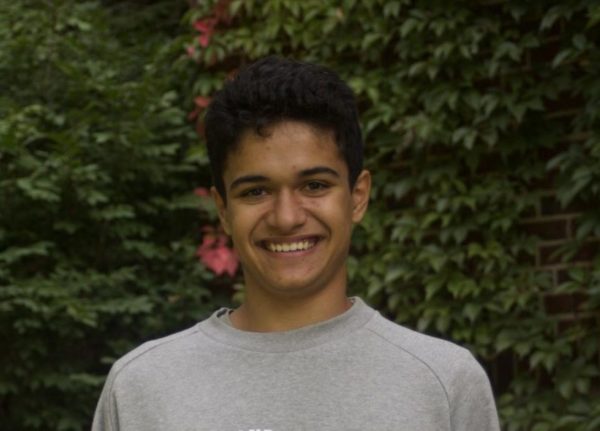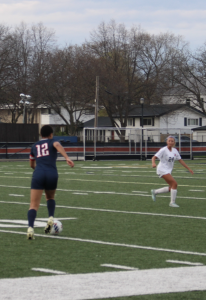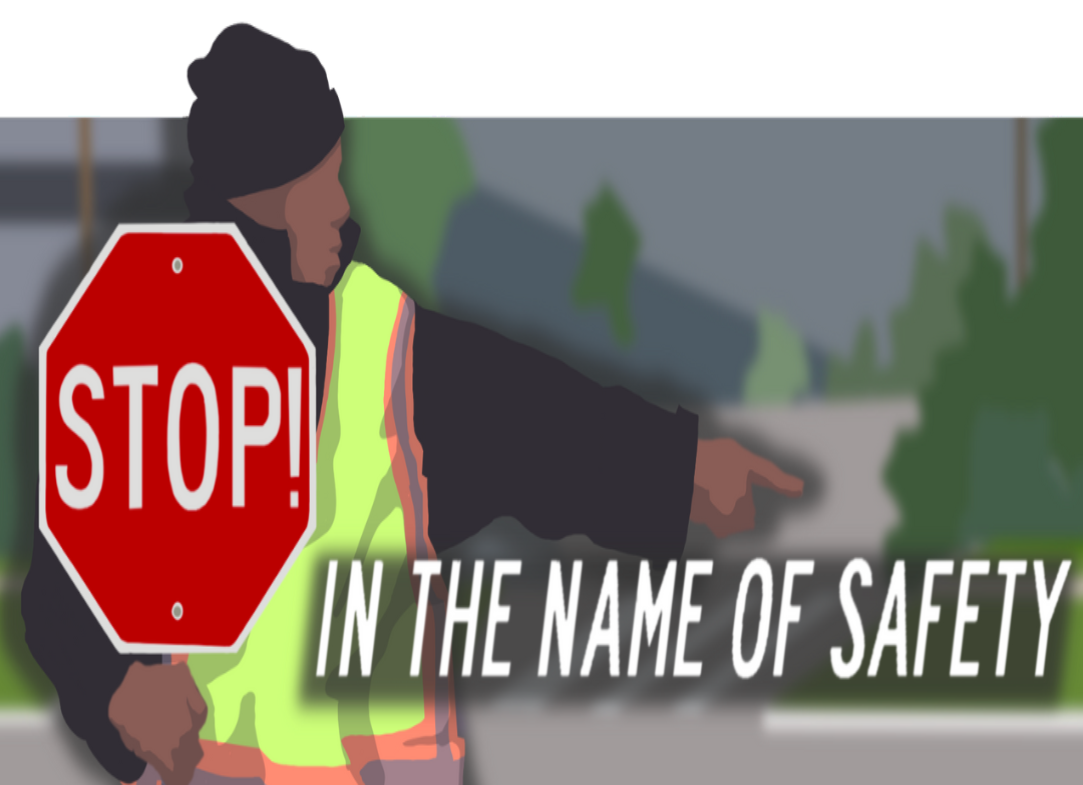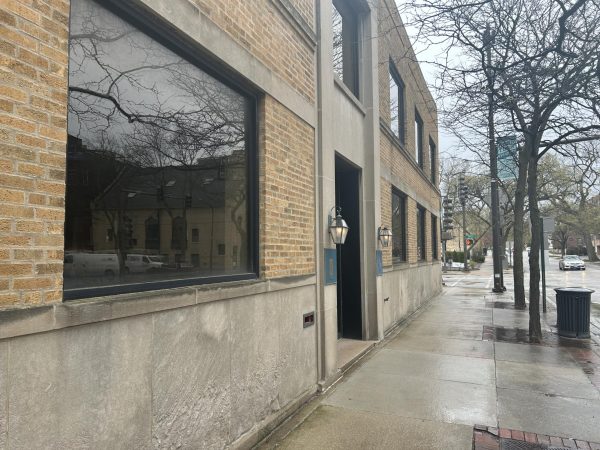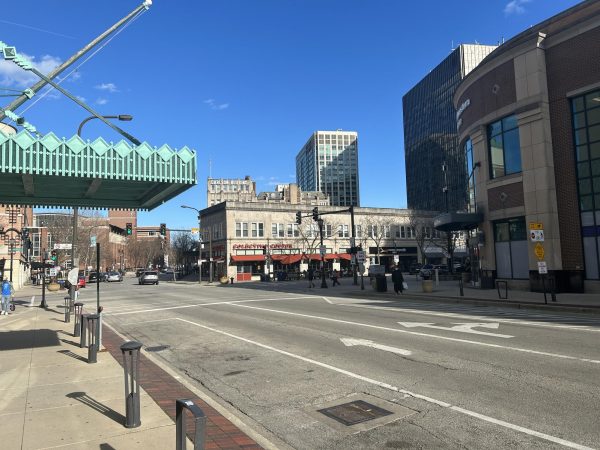District 202 school board meeting highlights student safety, marginalized student experience
December 13, 2022
On Dec. 12, 2022, District 202 held its monthly Board of Education meeting. The meeting commenced with recognition of the community service achievements of sophomore Olivia Ohlson, and board member Monique Parsons.
It then moved on to discuss the main topic for the day, a report on efforts to support Black boys and girls at ETHS. The three main presenters of this report were Lauren Hamilton, the Secretary to Assistant Superintendent/Principal and Equity Analyst for the district, Ganae McAlpin-Toney, the Director of Equity at the district, and Terrance Stevenson, the Student Success Center (The Hub) specialist at the school.
Hamilton opened up the discussion by talking about the main purpose of the report.
“It can be really easy to be siloed, and to work individually to do the things we know we need to do for our students,” said Hamilton. “And so last year, returning to school after a year of the pandemic, racialized uprising and tension, a lot of economic struggle in our communities, Dr. Campbell thought it was really important to get folks at a table to make sure we were all on the same page about the students we were supporting and how we wanted to continue to enhance those efforts moving forward.”
Stevenson followed by talking about his experience interacting with students of color at ETHS and elsewhere. He moved to Evanston this summer with his wife and children from Champaign, Illinois, and currently works in The Hub on a daily basis, interacting with students and trying to understand their opinions on our education system in Evanston. In the past, he has had success helping students find their way to college and described the powerful emotions he felt in sharing their success. He is trying to replicate that at ETHS, and recently started a group called The Check In. It is a space for young Black men to come and talk about their lives. It started with them talking about things like sports, but eventually moved to deeper discussions about their experiences at ETHS.
“I didn’t try to correct them, or tell them that they were right or wrong. I just wanted to provide a space for them to share,” said Stevenson. “A lot of the things they shared tended to center around not being seen. They felt that their views were not valuable, that their input was not welcome.”
Stevenson would then share that information with the school administration.
“There are young men here who have voices, who have needs, who have concerns. And yes they may walk the halls and yes they may hang out in the bathrooms, but they’re still valuable,” said Stevenson. He later said, “I believe that students should have a voice in the solutions that are developed around them.”
Other community organizations that help out with similar issues at ETHS are The Boule, the Kappa League and Black Men Lead.
McAlpin-Toney leads another outreach association at ETHS, this one focused on Black girls. It is called the SHADES Mentoring Program, and its goal is to prepare its participants for life after ETHS. Teachers recruit students for the program, and participants are assigned mentors to help guide them with their post-high school goals. The program is currently looking for more mentors to be able to guide future participants.
“I think it’s really important that we ask you [the school board], ‘What do you think?,’ and if you have any opinions, we can work intergenerationally to help our girls and boys in the district,” said McAlpin-Toney.
An important note is that while currently the SHADES program is reserved for Black girls, it will soon be expanded to include members of the Latinx community.
The discussion then moved to conversations about the broader impact the high school has on its Black students. Monique Parsons, President and CEO of the McGaw YMCA, and Vice President of the School Board, brought up the point that too often, Black students have participated in programs that have had little impact in their actual lives. She commented on Stevenson’s efforts by saying that they are helpful to a small group of students, but the main goal should be to improve the school experience for all students, and to make change throughout ETHS as a whole.
“We need to make sure that all of our students are feeling like they are seen, they are valued. For someone as young as the students that we’re responsible for, this is where it starts, and then it lingers into their adulthood,” said Parsons. She continued, “I also think that what we do at ETHS will be replicated in the community.”
She also highlighted the importance of sharing the struggles of the district with the community. If people understood the root cause of some of the problems the school has had in dealing with students, then there is more of a chance of fixing it.
“There are students where if we don’t intervene, it’s a matter of life or death. And that is how bad it is for certain populations in our community. So I think really honing in on the ‘why’ and being unafraid to share that, so that everyone is aware why that is so critical, will be important as we move forward,” said Parsons.
Pat Maunsell, another board member, added to that point.
“I think we have to help the community understand the broader complications of the issues our students are facing, which are enormous. For some, unbelievably enormous,” said Maunsell.
Afterwards, the conversation briefly switched to a discussion of the district’s goals. During the search for the superintendent last year, District 202 used the Alma Advisory Group, a consulting organization that helped in the decision process. The district is planning to continue working with the group, this time to discuss future plans for ETHS.
Next on the agenda was public comment. Marc Bear, a parent with two children at ETHS, spoke briefly about the possibility of implementing metal detectors into school life. After hearing about two instances of a loaded gun being found at the school, he became worried about the safety of the students at ETHS.
“My concern is that now there have been two instances where loaded weapons were found in the school, and it’s a sad comment on our society today,” said Bear.
As a result, he thinks that installing metal detectors, while not ideal in his mind, or in the mind of many others, as he acknowledged, are the only solution.
“You can’t change society,” said Bear. “You can have all the idealism in the world, but you have to deal with reality, and this is just a reality of how our society is now.”
Subsequently, the topic switched to individual reports by members of the school board. Pat Savage-Williams, President of the School Board, gave an update on a recent school conference she had attended with other administrators and educators across Illinois. Nicole Yao, the Student Representative to the School Board, gave a recap of the Student Voices Forum that she had hosted earlier that day, which 800 ETHS students attended over the course of the day.
“Personally, I was watching people talk about their experiences in school and it was just so emotionally powerful for me. It just sparked some more in me to make some more change in our community,” said Yao. She continued, “I’m just looking forward to a great future for ETHS and I think the students are looking forward to that too.”
Superintendent Dr. Marcus Campell and Assistant Superintendent/Principal Dr. Taya Kinzie were also present all day at the forum, in The Hub.
“It was a very constructive, and instructive day in The Hub,” said Campbell.
The last item on the agenda was a report from Campbell. He focused on the issue of safety at ETHS, and outlined the actions the district has taken to improve the safety of its students. This included collaboration with Schenita Stewart, the new Evanston Police Chief, and Luke Stowe, the City Manager.
“What we know is that a safe Evanston makes a safe ETHS. This is why our collaboration with the city and our community organizations are so important,” said Campbell.
Additionally, Campbell acknowledged the problems surrounding the possibility of using metal detectors, and talked about possible alternatives.
“We will continue to look for ways of deterrence, which includes sophisticated weapons detection systems that can maximize both our well being and our humanity,” said Campbell. “Meaning ‘Is there a way we can detect weapons without having metal detectors?’ We’re certainly looking at that as an option for our school.”
Campbell highlighted the importance of keeping the community informed about the decisions the school has to make in relation to safety, so that everyone can give their input into the matter. In that vein, there will be a community TalkBack event held on Jan. 19 at the St. Nicholas Church in Evanston.
Overall, the school board meeting focussed mainly on safety at the school and improving the school experience of marginalized students.
“I don’t ever want to get to the point where we think we are doing it all,” said Savage-Williams. “Because as long as our youth struggle, then we have to keep finding ways to support them, we have to keep being creative, and keep [thinking about], “What more can we do?’”

